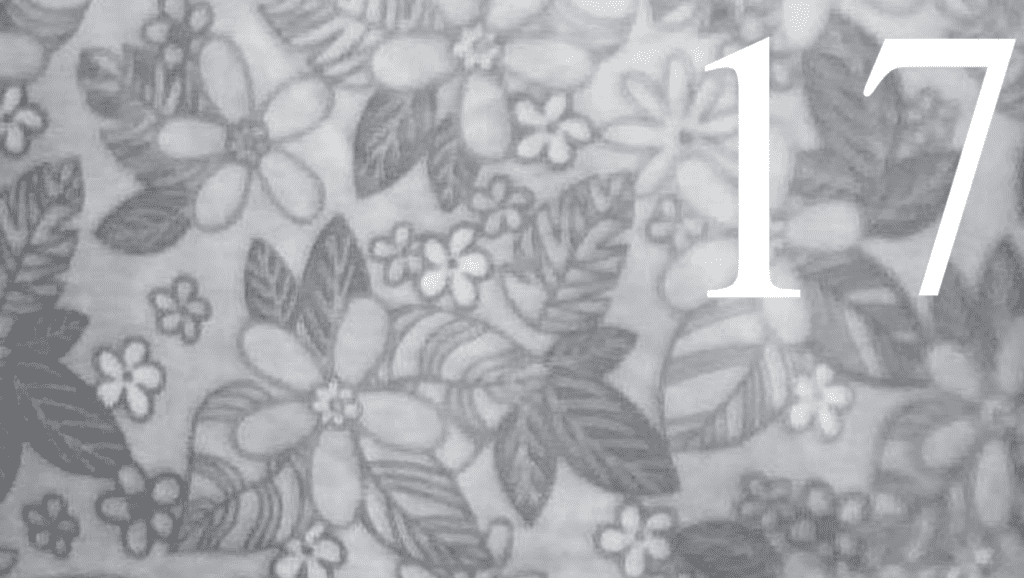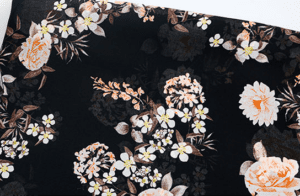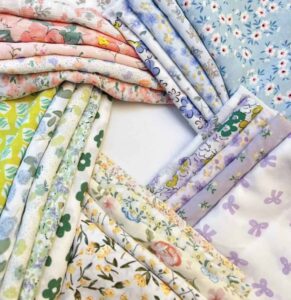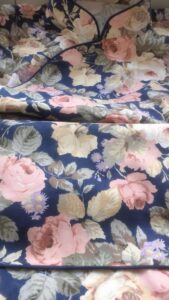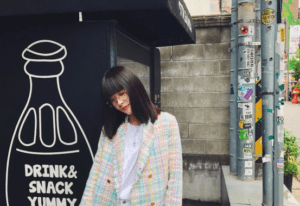Textile fabric pearlescent and luminous printing
There are natural and artificial pearlescent, and artificial pearlescent can be extracted from fish scales. Pearlescent does not need to be stimulated by light sources and is resistant to acids and alkalis and high temperatures. Tencel fabrics with pearlescent printing show a soft pearl-like lustre and elegance, with an excellent feel and fastness. The pearl pulp is suitable for digital printing on all kinds of pure tencel and all kinds of interwoven or blended tencel fabrics, and can be used alone or mixed with paint to produce coloured pearls.
Light. In the printing process, a 60-80 mesh screen is generally preferred. Luminous printing is mainly the use of luminous crystal paste printed on the digital printing surface of textile fabrics, through pre-drying and melt-drying so that the luminous paste is fixed on the fabric. The main applications are in polyamide and spandex elastic interwoven Tencel fabrics.
Glow-in-the-dark printing on textile fabrics
The glow-in-the-dark powder is a rare-earth metal, made into a powder of about 1μm fineness, which is printed on the Tencel fabric using the coating printing method to form a pattern. After a certain amount of light, the luminous afterglow of the pattern can reach 8-12 hours, which has a good luminous effect and an excellent feel and fastness. However, it is only printed on light to medium ground colours.
Textile fabric foam three-dimensional printing
Foamed three-dimensional printing refers to the addition of foaming agent plastic resin to the printing paste, after high temperature melting and baking
The decomposition of the foaming agent, the release of gas, the expansion of the paste and the formation of three-dimensional pattern, and the resin to fix the paint, coloring and foam three-dimensional effect. One is the direct issuing of the foaming paste, the other is the printing of the foaming paste after blowing dry and then using the elastic transparent paste embossed on the foaming paste blowing dry, high temperature foam forming. The foaming temperature is generally 110°C, the time 30 seconds, and the printing is done with a screen of 80-100 mesh.
Capsule printing on textile fabrics
The microcapsules consist of an inner core and a capsule coating, the inner core being the dye and the capsule coating being gelatine. The microencapsulated dyes have particles between 10 and 30 μm.
Matte printing on textile fabrics (imitation jacquard printing)
A matting pulp containing a matting agent on a glossy fabric, using a coating printing process, to obtain a partially matt print, with a clear, dark, jacquard-like style. The matting pulp is generally made of titanium dioxide or white paint as a matting agent, with a non-yellowing binder. It is mainly used on satin or twill silk, rayon, synthetic and cellulose knitted fabrics and blends, but also on tencel fabrics and, of course, on calendered fabrics and sample papers.
Gold and silver powder printing on textile fabrics
The gold or silver powder is mixed with a special gold or silver powder paste or binder with good transparency and printed on the Tencel fabric to form a gold or silver glitter pattern.
Textile scintillation printing
The scintillation sheet is vacuum aluminised metal sheet in various colours, thickness 0.008mm-0.1mm, high temperature resistant. The scintillation piece should be printed with strong adhesion, transparent film, good lustre, without affecting the scintillation and special printing paste to print, to ensure that the fabric feels soft and has a good fastness, to achieve the effect of colourful.
Gold foil printing (hot stamping) on textile fabrics
The special gold foil pulp is used to print on the fabric, which is then covered with aluminium foil and pressed at high temperature to obtain a gold foil effect. The special gold foil paste is a thermoplastic resin-based water-based latex paste with a soft feel, good brightness, good fastness and adhesion, and can be used on any fabric that can withstand temperatures up to 1600°C.
Imitation peach skin print on textile fabric
The peach skin imitation print is made with imported peach skin paste (or with paint) to achieve a peach skin effect on the surface feel and appearance after printing. The peach skin paste has a strong covering power and is more suitable for printing on large surfaces, without showing the ground or blocking the screen.
textile fabric imitation leather printing
Leather-like prints are printed on fabrics using leather-like pastes and coatings, which are dried and baked to achieve a leather-like feel and appearance. The leather-like paste has good elasticity and coverage.
Faux velvet printing on textile fabrics
The velvet print uses gold and silver velvet paste printed on the fabric and is dried and baked to obtain a velvet-like velvet feel and lustre.
Contrasting dark prints on textile fabrics
The colour deepening pulp is printed on the colour ground and dried to give a darker or lighter contrast to the print. The printed Tencel fabric does not need to be melted and dried and has a soft feel and good colour fastness.
Colour coated printing on textile fabrics (lustre printing)
The fabric is dried and baked to give the surface a plasticised and glossy finish using gloss and paint pastes.
Photochromic printing on textile fabrics
It is the principle of absorbing ultraviolet rays and converting them into energy, and applying the photochromic material to printing. The colour-changing paste uses micro-encapsulation technology to change the colour of Tencel fabrics from colourless to coloured, blue to blue-violet, etc.
Temperature sensitive colour change printing on textile fabrics
The thermochromic material is printed on the fabric and the colour is changed repeatedly by the temperature change of the human body.
Textile fabric transfer printing
The desired pattern is printed on paper with a dye paste and then, by laminating the fabric to the paper, the dye is transferred from the paper to the surface of the fabric through the sublimation properties of the dye, after high temperature and pressing, to form a patterned colour effect. Transfer printing is more common with polyester and nylon fabrics, but new processes such as fabric, which are suitable for reactive printing, have also made great breakthroughs.
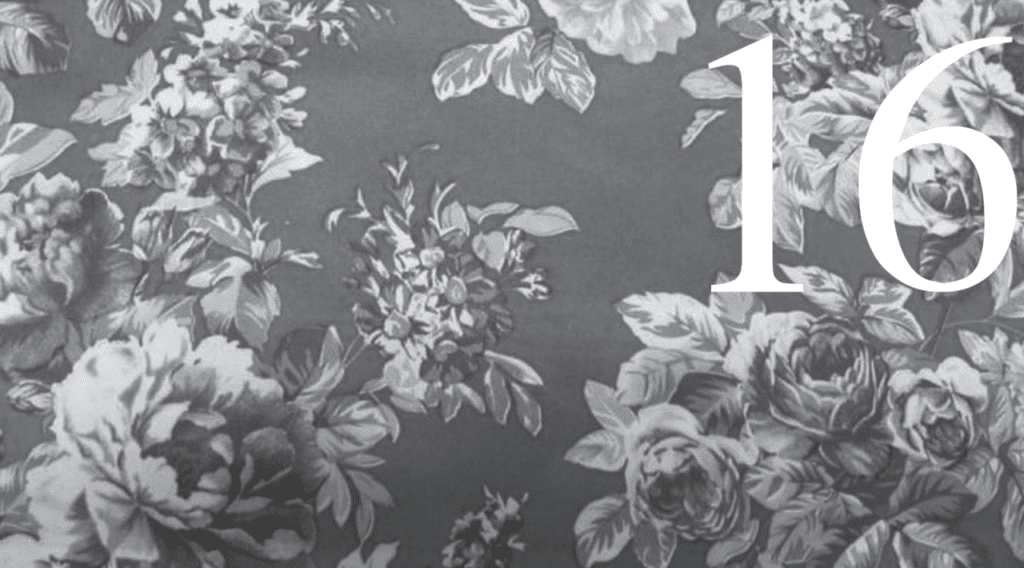
Aroma finishing printing on textile fabrics
The new technology of slow-release pressure-sensitive microcapsules is used to add the fragrance-containing resin to the coating paste for printing, so that the fragrance-containing resin is adhered to the fabric by the adhesive in the coating paste, which is cross-linked with the fibres through baking and firmly fixed on the fabric surface, and the fragrance can be released for more than 6 months.
